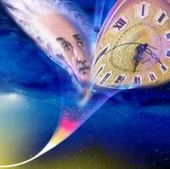
© Cetin BalScientists have found that, when twins are orbiting a massive object, time dilation can cause the accelerated twin to be older if that twin is moving slower than the other twin; in this case, velocity is the deciding factor of age, and the twin with the greater velocity is younger.
Just when you thought you were beginning to understand the twin paradox (maybe), scientists have found something new to ponder. In the original version of the famous thought experiment on time dilation, one twin stays on Earth while the other twin takes a rocket at nearly light speed into space, and returns to find that he is younger than his twin on Earth. But a new version of the story now shows that the twin who experiences an acceleration can be older than the twin who doesn't accelerate, under slightly different conditions.
Physicist Marek Abramowicz of Goteborg University in Sweden and astronomer Stanislaw Bajtlik of the Nicolaus Copernicus Astronomical Center in Warszawa, Poland, have proposed the surprising new version of the twin paradox, which at first seems to run contrary to the traditional version. However, the scientists show that the traditional version is actually a specific case of a more general concept.
"In the best known version of the twin paradox, the twin who is accelerated is younger," Abramowicz and Bajtlik told PhysOrg.com. "In the version discussed by us the accelerated twin is older. It is quite surprising. It is almost as to say that 'the older twin is younger.'"
